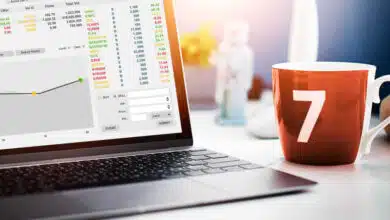The Impact of Going Digital Virtual Farewell card

As virtual farewell card rise in popularity, we must also consider their impact on the environment compared to traditional paper-based greetings. On the surface, digital options seem preferable from a sustainability standpoint – no trees cut down, no shipments requiring fuel. However, the reality is more nuanced once we examine the full lifecycles of each medium.
While e-cards don’t directly use paper, we shouldn’t overlook the carbon footprint of digital infrastructure. Data storage in massive server farms and regular device/software upgrades contribute significantly to global energy usage and e-waste problems. Streaming video messages or designing elaborate templates may have a higher footprint than a simple paper note. Server farms also face challenges recycling obsolete hardware in an eco-friendly way.
Additionally, we must acknowledge the human labor involved with Virtual Farewell card production. Independent designers and vendors still rely on physical workspaces, equipment, shipping materials for order fulfillment, and business travel – all generating emissions. Larger corporations face these impacts at an even greater scale to support complex online platforms. Some argue paper cards produced and delivered locally could have a lower overall footprint in certain contexts.
It’s also possible that widespread digital adoption could indirectly increase paper usage in unintended ways. If fewer physical cards are sent, what happens to leftover stock? Do publishers print smaller batches more often to match fluctuating demand, negating efficiency gains? And without the option to pass cards between recipients, do digital-only senders turn to printed photo books or other formats to achieve similar sharing/keepsake effects?
The most eco-friendly approach may be moderation – using online options when most convenient but still celebrating important occasions like weddings or retirements with traditional paper cards to preserve their social functions. Hybrid models of digital RSVPs with physical thank you notes could strike the right balance. And prioritizing locally made, FSC-certified, recyclable paper products offsets impacts of transportation.
Overall, neither medium is perfectly sustainable on its own. A nuanced understanding of full lifecycles is needed rather than assumptions that “digital is green.” Both industries must continuously improve practices through innovation and clean energy to minimize footprints over the long run. But individuals also play a role by making mindful choices that consider environmental and social impacts holistically.
With open discussion, we can guide this evolution toward the most balanced outcome respecting both tradition and the planet. But change starts from within – by reflecting critically on our own behaviors and finding ways to celebrate meaningful moments with mindful moderation of both old and new technologies.
Virtual Cards as Keepsakes
One concern often raised about digital cards is that they lack the tangible, sentimental quality of paper ones kept in memory boxes or albums. However, advances in technology are allowing virtual farewells to take on a keepsake quality of their own.
Many card platforms now enable compiling messages into customized digital scrapbooks, photo books or video montages. These can be printed or stored digitally. Additionally, simple screenshots provide easy ways to preserve favorite cards for future reflection. Social media posts from farewell events create virtual memory threads in themselves.
Looking ahead, more advanced options may emerge. Imagine holographic projections replaying video cards in 3D space. Digital assistants able to retrieve and “flip through” virtual card books on command. Even embedding farewell messages directly into augmented reality keepsake boxes viewable through smart lenses.
The ephemeral nature of online content makes preserving digital memories especially important. Platforms dedicated to archiving virtual cards long-term could emerge. Blockchain technology may provide solutions to permanently store farewells in decentralized ledgers. Governments may establish digital heritage programs.
Most significantly, virtual cards are creating new types of sentimental traditions. Future generations growing up screen-native will view digital farewells through a lens of nostalgia. They’ll fondly remember the cards that connected far-flung family despite any barrier. Digital archives could become treasured family heirlooms passed down.
While physical cards retain value, virtual formats are carving their own place as meaningful mementos. With creative archiving and a shift in perspective, their importance need not be defined by physicality alone. Both can coexist as cherished ways to commemorate life’s moments when embraced for their shared purpose – keeping memories of love and support close to the heart through any medium.
Sentiment is where digital cards truly shine though. Advanced designs allow incorporating multimedia elements like photos, video messages, and interactive features impossible through static paper. These personalized touches facilitate deeper connection. Rather than a brief note, recipients gain a more intimate glimpse into the sender’s life. Interactive functions spark continued engagement beyond the initial farewell too.
While tradition remains meaningful, virtual cards deserve recognition as a tool growing people closer in the modern era. Both formats can coexist by embracing their respective strengths. Perhaps one day, digital farewells will be regarded just as nostalgically, representing how technology brought dispersed communities together to share life’s most poignant moments. Progress need not come at the cost of tradition when we make the most of new opportunities to foster human bonds.
visit to : A Comprehensive Guide on How to Automate and Optimize Direct Mail Campaigns




